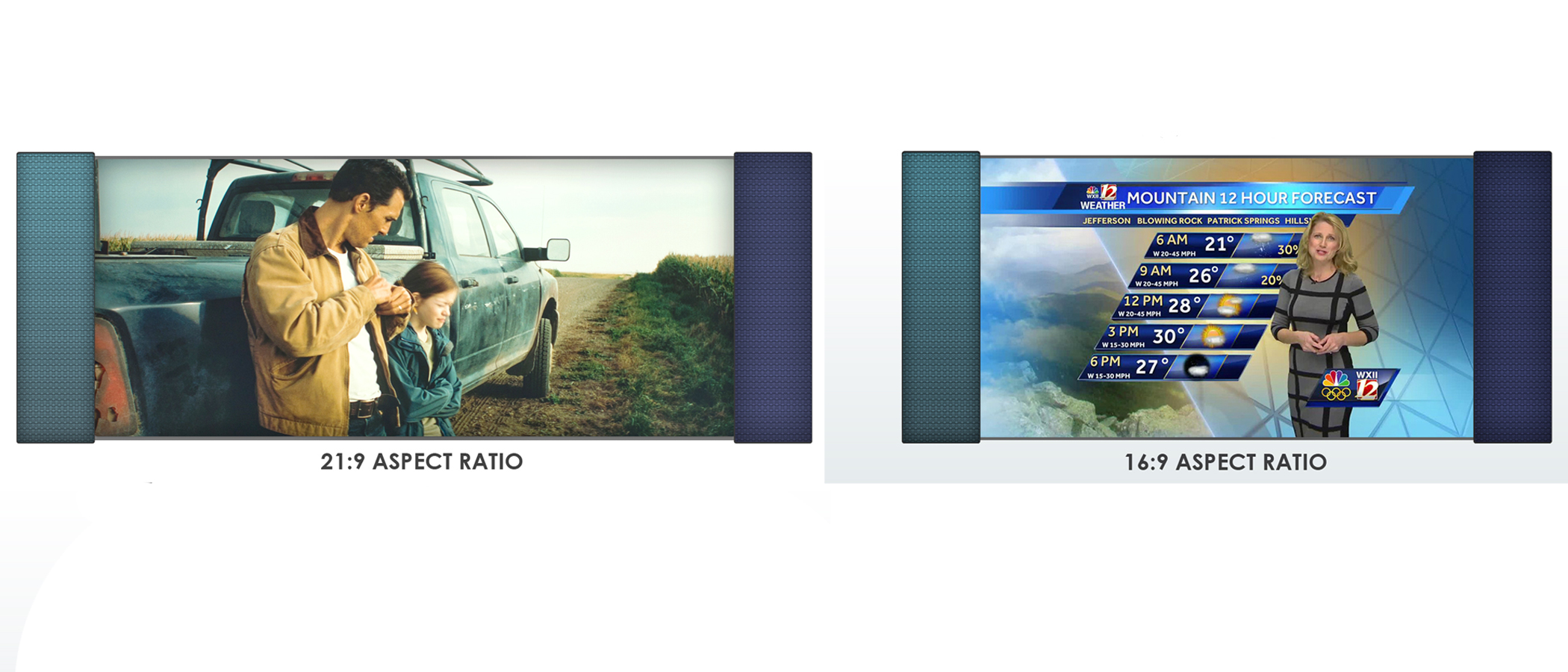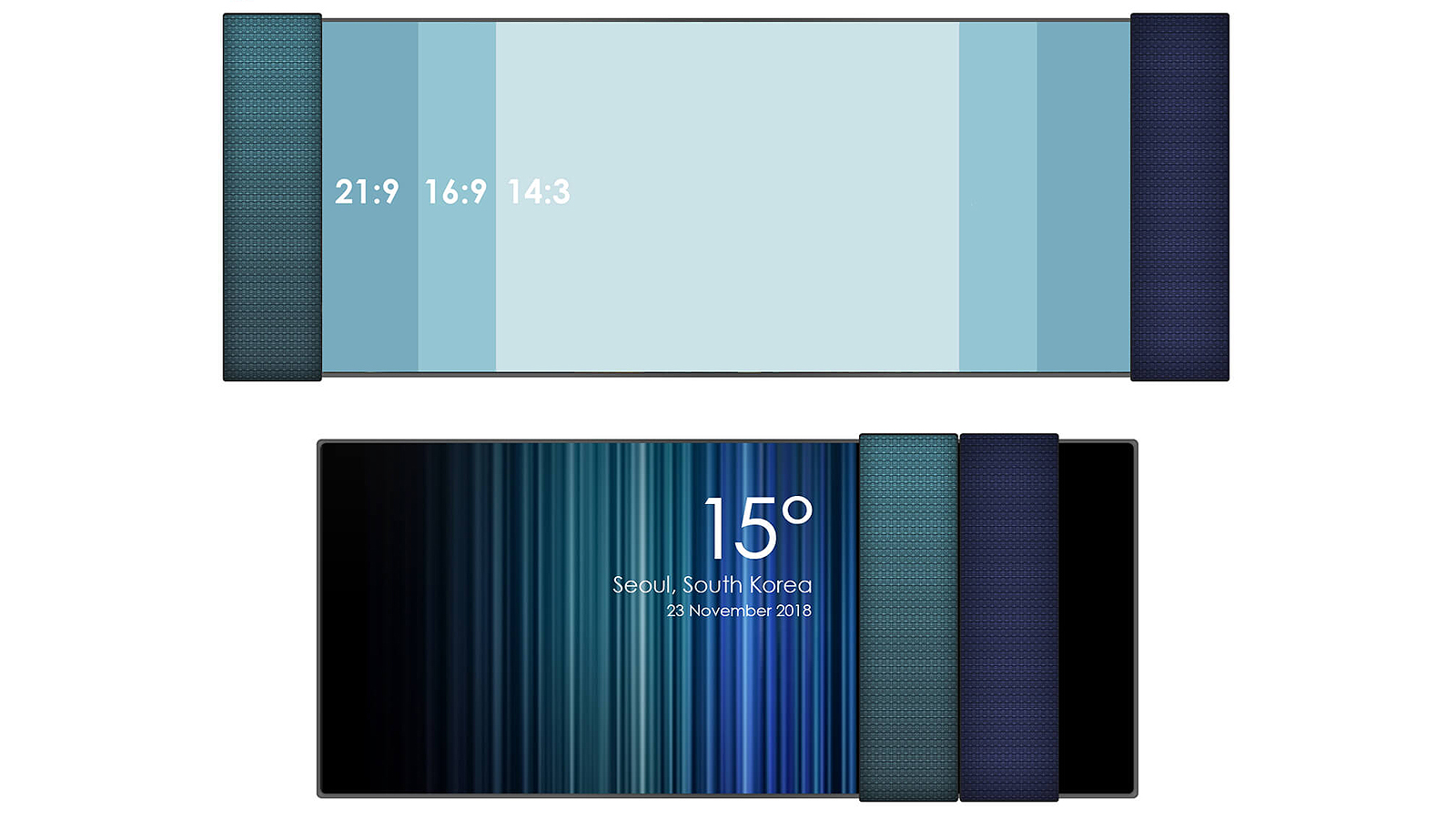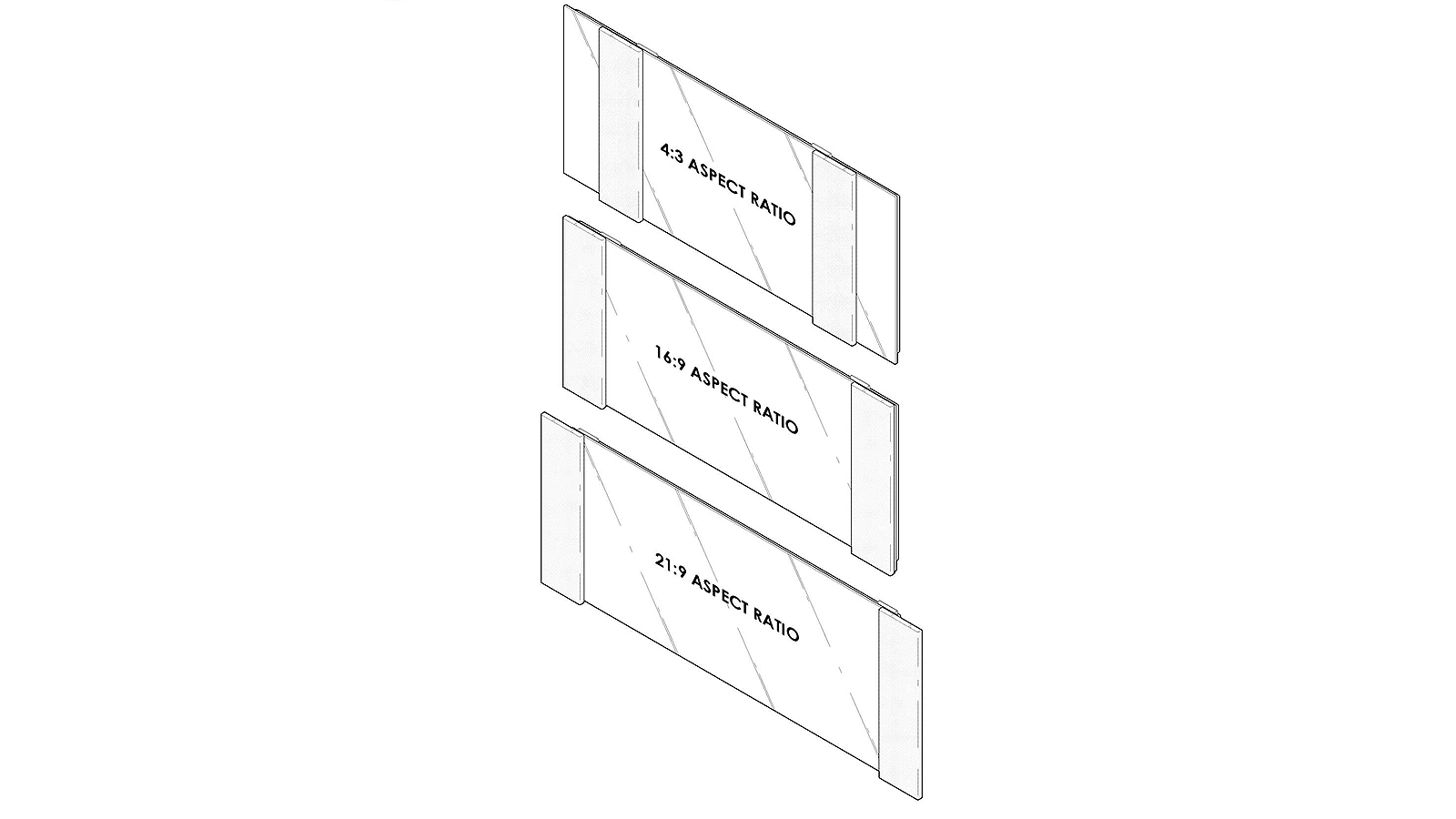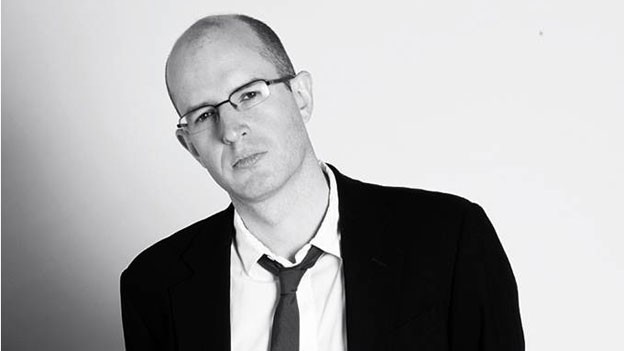LG's 2019 4K OLED TV will have speakers that move, ending the misery of black bars
Is this the ultimate in premium TV features, or just slightly mad?


Have you ever sat watching your OLED 4K HDR TV with smart TV bells and whistles and thought, "This is great, but wouldn't it be better if it had moving speakers?" Not so the speakers can run after you down the hallway when you go to make a cup of tea. No, it's so your TV can show films and TV in different aspect ratios, without black bars. Obviously.
Wait, what?

No more black bars (unless you count the speakers)
Okay, so normally when you're watching a movie in 21:9 aspect ratio on a TV, you'll see black bars at the top and bottom. When you switch to a Netflix stream in 16:9, the screen is completely filled. But then if you watch Fawlty Towers on UK Gold or an old movie on Talking Pictures, it'll be in 4:3 and black bars will appear on either side of the image.
Well not any more. Not on LG's watch. It's latest patent filing shows a TV with a 21:9 aspect ratio and mechanically sliding speakers. The LG TV, which was discovered by the patent-library-searching newshounds at Let's Go Digital, is supposedly set for unveiling at CES 2019 in Las Vegas.
On this TV, black bars are banished. The speakers start at the very edge of the TV when showing a movie in 21:9. They then glide inwards to frame 16:9 visuals. If you want to watch something filmed in 4:3 they'll glide even nearer the middle, at which point we suspect things will start to look rather weird, with a chunk of dead screen real estate sticking out at either end.
You don't need to press any buttons – as soon as the TV is turned on, the speakers will automatically adapt to the broadcast aspect ratio. Presumably if the next film or TV show you watch has a different aspect, it'll adjust accordingly.
There are no other details at present but there'd be no point putting an audio setup like this with a low-to-mid-range TV, so expect to see these motorised woofers straddling a 65-inch+ OLED premium beast of a telly at CES. And then don't expect to see them ever again, until you win the lottery.
Get all the latest news, reviews, deals and buying guides on gorgeous tech, home and active products from the T3 experts
LG filed this patent with WIPO Haque Express earlier this year.
Aspect ratios: a fun guide

21:9 is the true widescreen format used for most modern Hollywood films. The noticeably narrower 16:9 ratio is the one used on widescreen TVs, which is a little confusing but good news for most people who don't have hugely wide living rooms. 4:3 is what old CRT tellies used to use and was also a popular aspect ratio among many film makers in the black and white and early colour era.

Duncan is the former lifestyle editor of T3 and has been writing about tech for almost 15 years. He has covered everything from smartphones to headphones, TV to AC and air fryers to the movies of James Bond and obscure anime. His current brief is everything to do with the home and kitchen, which is good because he is an excellent cook, if he says so himself. He also covers cycling and ebikes – like over-using italics, this is another passion of his. In his long and varied lifestyle-tech career he is one of the few people to have been a fitness editor despite being unfit and a cars editor for not one but two websites, despite being unable to drive. He also has about 400 vacuum cleaners, and is possibly the UK's leading expert on cordless vacuum cleaners, despite being decidedly messy. A cricket fan for over 30 years, he also recently become T3's cricket editor, writing about how to stream obscure T20 tournaments, and turning out some typically no-nonsense opinions on the world's top teams and players.
Before T3, Duncan was a music and film reviewer, worked for a magazine about gambling that employed a surprisingly large number of convicted criminals, and then a magazine called Bizarre that was essentially like a cross between Reddit and DeviantArt, before the invention of the internet. There was also a lengthy period where he essentially wrote all of T3 magazine every month for about 3 years.
A broadcaster, raconteur and public speaker, Duncan used to be on telly loads, but an unfortunate incident put a stop to that, so he now largely contents himself with telling people, "I used to be on the TV, you know."